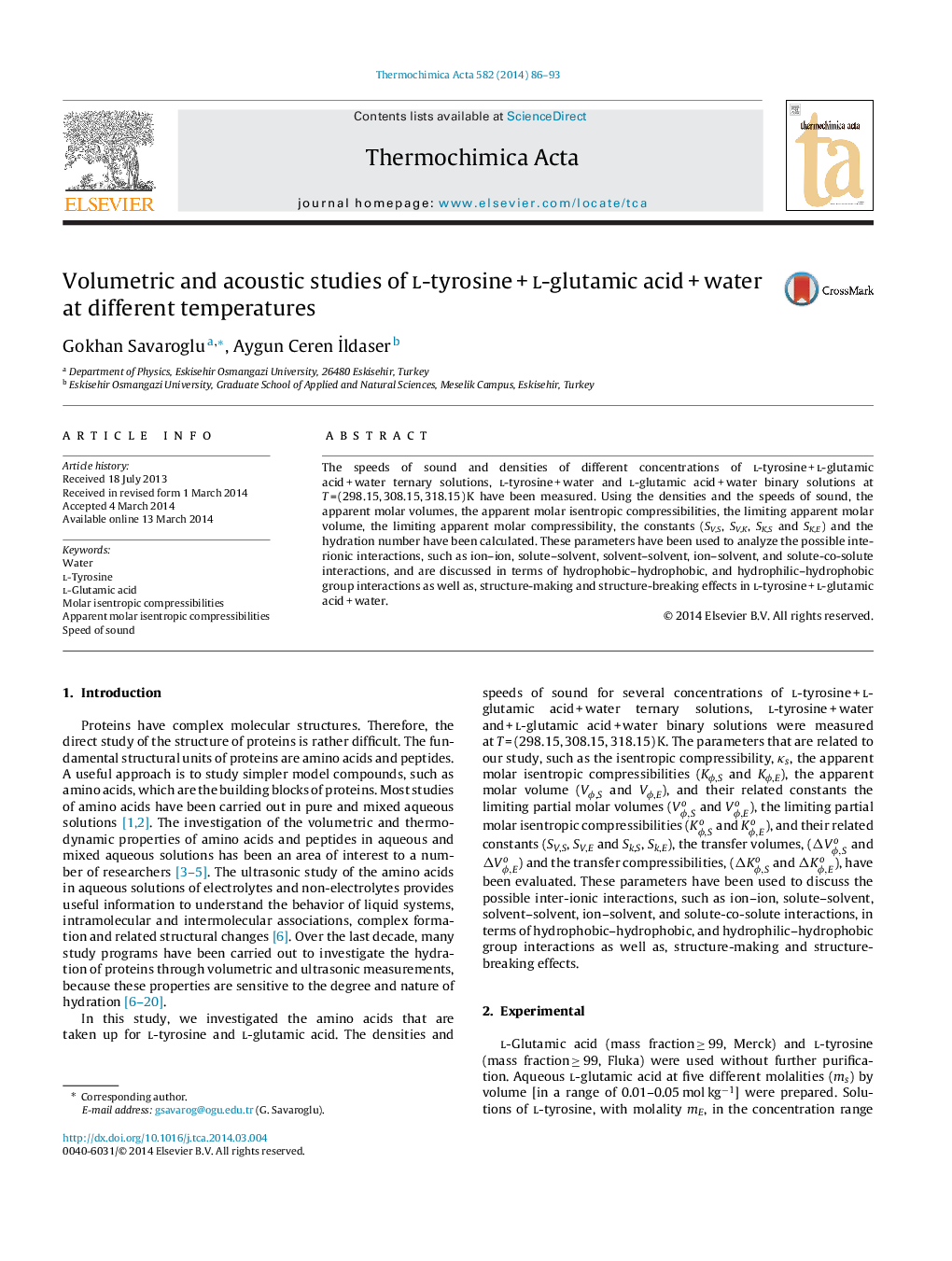| Article ID | Journal | Published Year | Pages | File Type |
|---|---|---|---|---|
| 673409 | Thermochimica Acta | 2014 | 8 Pages |
•This study was analyzed the possible interactions in l-tyrosine in aqueous l-glutamic acid.•Influence of amino acids concentration upon volumetric and acoustic properties was studied.•The NH values calculated with volumetric and compressibility methods.
The speeds of sound and densities of different concentrations of l-tyrosine + l-glutamic acid + water ternary solutions, l-tyrosine + water and l-glutamic acid + water binary solutions at T = (298.15, 308.15, 318.15) K have been measured. Using the densities and the speeds of sound, the apparent molar volumes, the apparent molar isentropic compressibilities, the limiting apparent molar volume, the limiting apparent molar compressibility, the constants (SV,S, SV,K, SK,S and SK,E) and the hydration number have been calculated. These parameters have been used to analyze the possible interionic interactions, such as ion–ion, solute–solvent, solvent–solvent, ion–solvent, and solute-co-solute interactions, and are discussed in terms of hydrophobic–hydrophobic, and hydrophilic–hydrophobic group interactions as well as, structure-making and structure-breaking effects in l-tyrosine + l-glutamic acid + water.
Graphical abstractThe transfer volume (ΔVϕo) values can be explained on the basis of the hydrophilic–ionic group interactions may make positive contributions to the ΔVϕo values, whereas ion–hydrophobic and hydrophobic–hydrophobic group interactions may make negative contributions to ΔVϕo.Figure optionsDownload full-size imageDownload as PowerPoint slide
